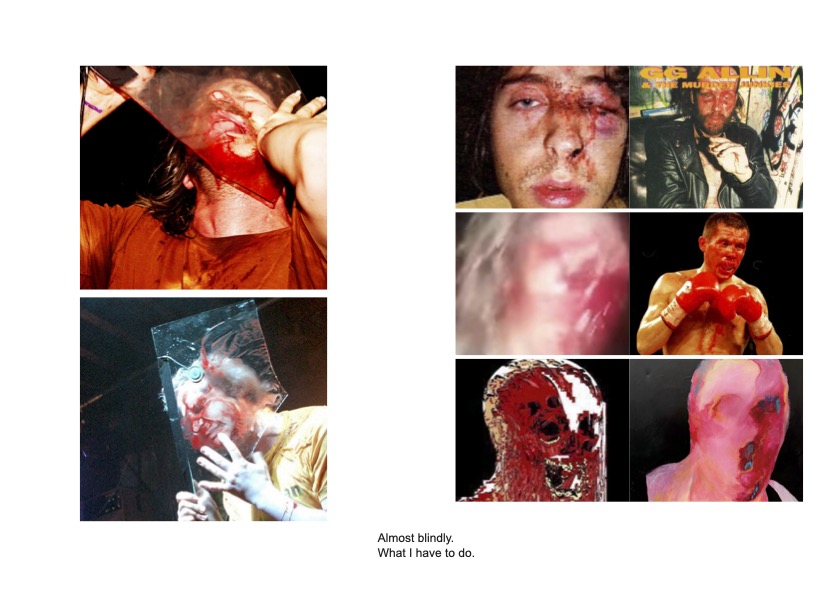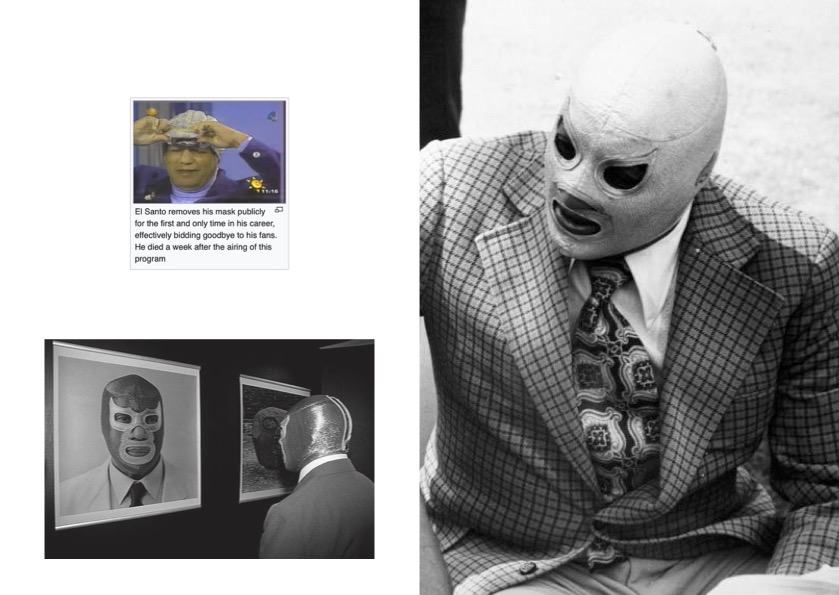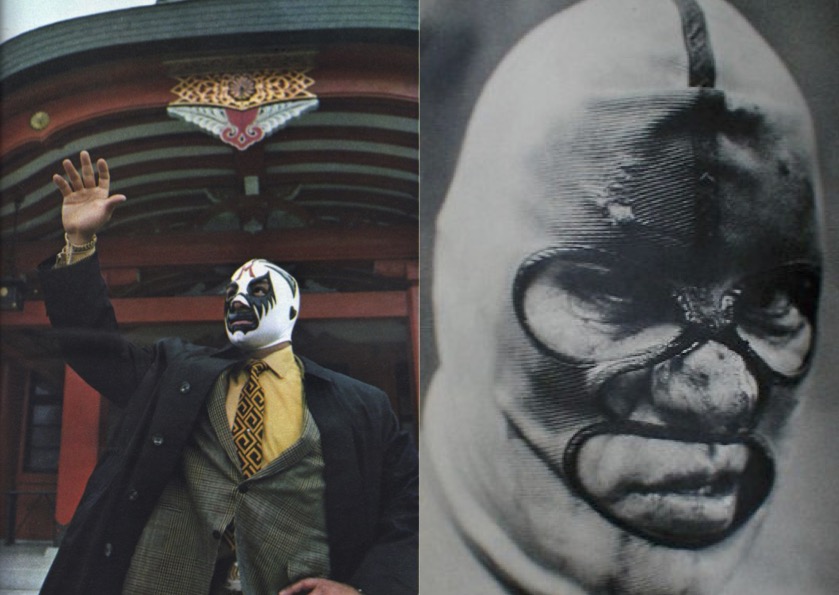

Een oud JOKE bestand, referenties voor album 2. Nu referenties voor rietveldjaar3













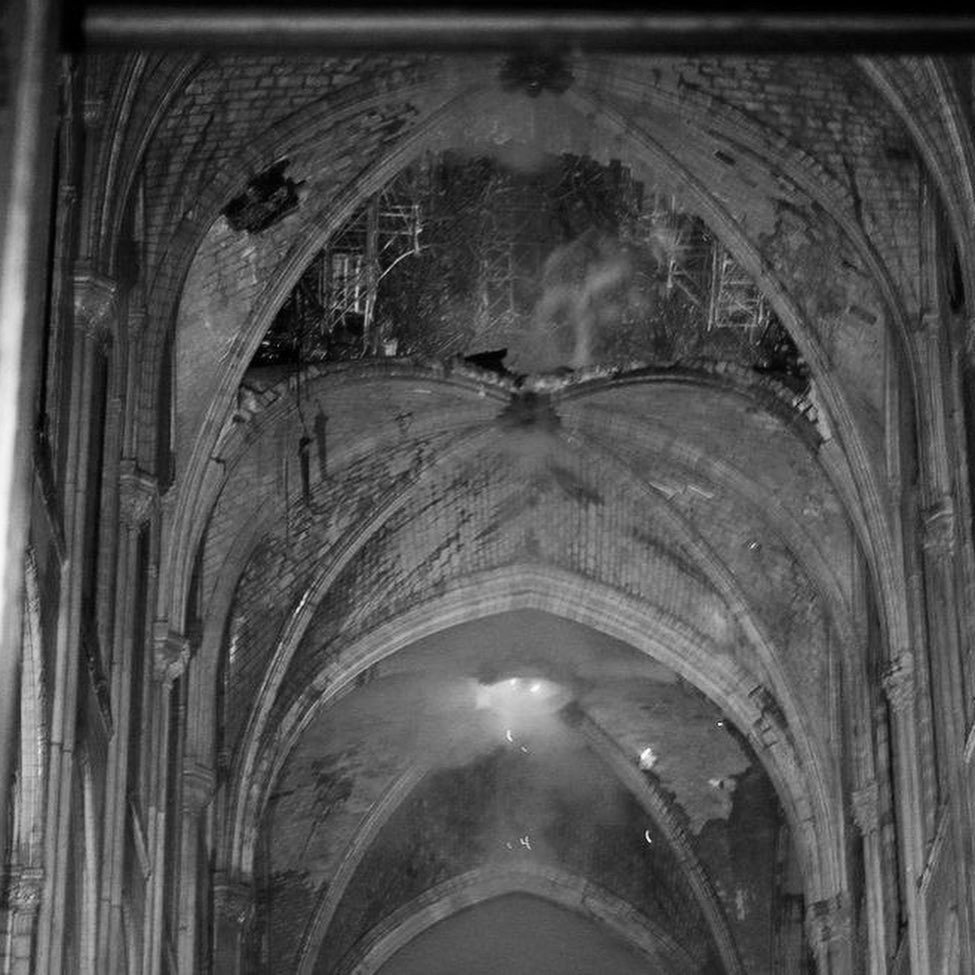
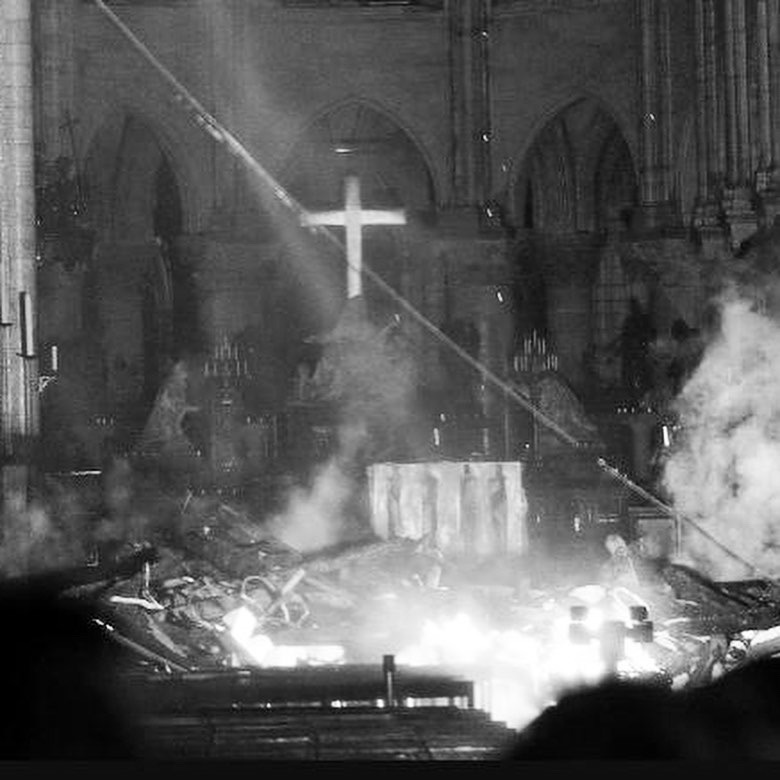

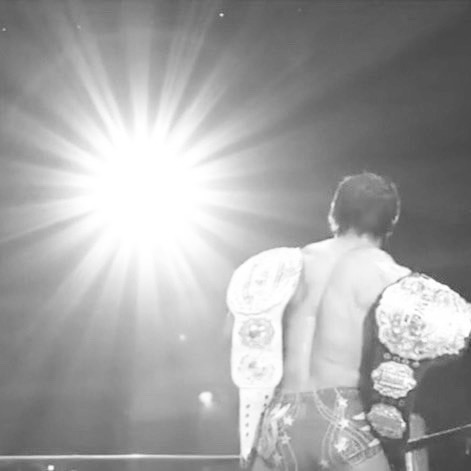

“The World of Wrestling” Roland Barthes
(An excerpt from Barthe’s book Mythologies, 1957)
The grandiloquent truth of gestures on life’s great occasions. --Baudelaire
1. The virtue of all-in wrestling is that it is the spectacle of excess. Here we find a grandiloquence which must have been that of ancient theatres. And in fact wrestling is an open-air spectacle, for what makes the circus or the arena what they are is not the sky (a romantic value suited rather to fashionable occasions), it is the drenching and vertical quality of the flood of light. Even hidden in the most squalid Parisian halls, wrestling partakes of the nature of the great solar spectacles, Greek drama and bullfights: in both, a light without shadow generates an emotion without reserve.
2. There are people who think that wrestling is an ignoble sport. Wrestling is not a sport, it is a spectacle, and it is no more ignoble to attend a wrestled performance of Suffering than a performance of the sorrows of Arnolphe or Andromaque [Barthes here refers to characters in neo- classic French plays by Molière and Racine]. Of course, there exists a false wrestling, in which the participants unnecessarily go to great lengths to make a show of a fair fight; this is of no interest. True wrestling, wrong called amateur wrestling, is performed in second-rate halls, where the public spontaneously attunes itself to the spectacular nature of the contest, like the audience at a suburban cinema. Then these same people wax indignant because wrestling is a stage-managed sport (which ought, by the way, to mitigate its ignominy). The public is completely uninterested in knowing whether the contest is rigged or not, and rightly so; it abandons itself to the primary virtue of the spectacle, which is to abolish all motives and all conse- quences: what matters is not what it thinks but what it sees.
3. This public knows very well the distinction between wrestling and boxing; it knows that boxing is a Jansenist sport, based on a demonstration of excellence. One can bet on the outcome of a boxing-match: with wrestling, it wold make no sense. A box- ing-match is a story which is constructed before the eyes of the spectator; in wrestling, on the contrary, it is each moment which is intelligible, not the passage of time. The spectator is not interested in the rise and fall of fortunes; he expects the transient image of certain passions. Wrestling therefore demands an immediate reading of the juxtaposed meanings, so that there is no need to connect them. The logical conclusion of the contest does not interest the wrestling-fan, while on the contrary a boxing-match always implies a science of the future. In other words, wrestling is a sum of spectacles, of which no single one is a function: each moment imposes the total knowledge of a passion which rises erect and alone, without ever extending to the crowning moment of a result.
4. Thus the function of the wrestler is not to win: it is to go exactly through the motions which are expected of him. It is said that judo contains a hidden symbolic aspect; even in the midst of efficiency, its gestures are measured, precise but restricted, drawn accurately but by a stroke without volume. Wrestling, on the contrary, offers excessive gestures, exploited to the limit of their meaning. In judo, a man who is down is hardly down at all, he rolls over, he draws back, he eludes defeat, or, if the latter is obvious, he immediately disappears; in wrestling, a man who is down is exaggeratedly so, and completely fills the eyes of the spectators with the intolerable spectacle of his power- lessness.
5. This function of grandiloquence is indeed the same as that of the ancient theatre, whose principle, language and props (masks and buskins) concurred in the exaggerat- edly visible explanation of a Necessity. The gesture of the vanquished wrestler signi- fying to the world a defeat which, far from disgusting, he emphasizes and holds like a pause in music, corresponds to the mask of antiquity meant to signify the tragic mode of the spectacle. In wrestling, as on the stage in antiquity, one is not ashamed of one’s suffering, one knows how to cry, one has a liking for tears.
6. Each sign in wrestling is therefore endowed with an absolute clarity, since one must always understand everything on the spot. As soon as the adversaries are in the ring, the public is overwhelmed with the obviousness of the roles. As in the theatre, each physical type expresses to excess the part which has been assigned to the contes- tant. Thauvin, a fifty-year-old with an obese and sagging body, whose type of asexual hideousness always inspires feminine nicknames, displays in his flesh the characters of baseness, for his part is to represent what, in the classical concept of the salaud, the ‘bastard’ (the key-concept of any wrestling-match), appears as organically repug- nant. The nausea voluntarily provoked by Thauvin shows therefore a very extended use of signs: not only is ugliness used here in order to signify baseness, but in addition ugliness is wholly gathered into a particularly repulsive quality of matter: the pallid col- lapse of dead flesh (the public calls Thauvin la barbaque, ‘stinking meat’), so that the passionate condemnation of the crowd no longer stems from its judgment, but instead from the very depth of its humours. It will thereafter let itself be frenetically embroiled in an idea of Thauvin which will conform entirely with this physical origin: his actions will perfectly correspond to the essential viscosity of his personage.
7. It is therefore in the body of the wrestler that we find the first key to the contest. I know from the start that all of Thauvin’s actions, his treacheries, cruelties, and acts of cowardice, will not fail to measure up to the first image of ignobility he gave me; I can trust him to carry out intelligently and to the last detail all the gestures of a kind of amorphous baseness, and thus fill to the brim the image of the most repugnant bastard there is: the bastard-octopus. [Barthes goes on to describe other ‘character roles’ in wrestling, comparing them to stock characters in the Italian tradition of Commedia dell’Arte.] Wrestling is like a diacritic writing: above the fundamental meaning of his body, the wrestling arranges comments which are episodic but always opportune, and constantly help the reading of the fight by means of gestures, attitudes and mimicry which make the intention utterly obvious. Sometimes the wrestler triumphs with a repulsive sneer while kneeling on the good sportsman; sometimes he gives the crowd a conceited smile which forebodes an early revenge; sometimes, pinned to the ground, he hits the floor ostentatiously to make evident to all the intolerable nature of his situa- tion [. . .]
8. [. . .]It is obvious that at such a pitch, it no longer matters whether the passion is genuine or not. What the public wants is the image of passion, not passion itself. There is no more a problem of truth in wrestling than in the theatre. In both, what is expected is the intelligible representation of moral situations which are usually private. [Barthes elaborates on this point, and again compares French wrestlers from the 1950s to char- acters in classical theater.]
9. What is thus displayed for the public is the great spectacle of Suffering, Defeat, and Justice. Wrestling presents man’s suffering with all the amplification of tragic masks. The wrestler who suffers in a hold which is reputedly cruel (an arm-lock, a twisted leg) offers an excessive portrayal of Suffering; like a primitive Pietà, he exhibits for all to see his face, exaggeratedly contorted by an intolerable affliction. It is obvious, of course, that in wrestling reserve would be out of place, since it is opposed to the voluntary ostentation of the spectacle, to this Exhibition of Suffering which is the very aim of the fight. This is why all the actions which produce suffering are particularly spectacular, like the gesture of a conjuror who holds out his cards clearly to the public. Suffering which appeared without intelligible cause would not be understood; a concealed action that was actually cruel would transgress the unwritten rules of wrestling [. . . .] What wrestlers call a hold, that is, any figure which allows one to immobilize the adversary indefinitely and to have him at one’s mercy, has precisely the function of preparing in a conventional, therefore intelligible, fashion the spectacle of suffering, of methodically establishing the conditions of suffering. The inertia of the vanquished allows the (tem- porary) victor to settle in his cruelty and to convey to the public this terrifying slowness of the torturer: [. . .] wrestling is the only sport which gives such an externalized image of torture. But here again, only the image is involved in the game, and the spectator does not wish for the actual suffering of the contestant; he only enjoys the perfection of an iconography. It is not true that wrestling is a sadistic spectacle: it is only an intelligi- ble spectacle. [Barthes discusses the forearm smash as a gesture signifying tragic catastrophe, then moves to the next major spectacle of wrestling: Defeat.] Deprived of all resilience, the wrestler’s flesh is no longer anything but an unspeakable heap out on the floor, where it solicits relentless reviling and jubilation. [. . .] At other times, there is another ancient posture which appears in the coupling of the wrestlers, that of the suppliant who, at the mercy of his opponent, on bended knees, his arms raised above his head, is slowly brought down by the vertical pressure of the victor. In wrestling, unlike judo, Defeat is not a conventional sign, abandoned as soon as it is understood; it is not an outcome, but quite the contrary, it is a duration, a display, it takes up the ancient myths of public Suffering and Humiliation: the cross and the pillory. It is as if the wrestler is crucified in broad daylight and in the sight of all. I have heard it said of a wrestler stretched on the ground: ‘He is dead, little Jesus, there, on the cross,’ and these ironic words revealed the hidden roots of a spectacle which enacts the exact gestures of the most ancient purifications.
10. But what wrestling is above all meant to portray is a purely moral concept: that of justice. The idea of ‘paying’ is essential to wrestling, and the crowd’s ‘Give it to him’ means above all else ‘Make him pay.’ This is therefore, needless to say, an immanent justice. The baser the action of the ‘bastard,’ the more delighted the public is by the blow which he justly receives in return. If the villain - who is of course a coward - takes refuge behind the ropes, claiming unfairly to have a right to do so by a brazen mimicry, he is inexorably pursued there and caught, and the crowd is jubilant at seeing the rules broken for the sake of a deserved punishment. [. . .] Naturally, it is the pattern of Justice which matters here, much more than its content: wrestling is above all a quantitative sequence of compensations (an eye for an eye, a tooth for a tooth). This explains why sudden changes of circumstances have in the eyes of wrestling habitueés a sort of moral beauty; they enjoy them as they would enjoy an inspired episode in a novel [. . . .]
11. It is therefore easy to understand why out of five wrestling-matches, only about one is fair. One must realize, let it be repeated, that ‘fairness’ here is a role or a genre, as in the theatre: the rules do not at all constitute a real constraint; they are the conventional appearance of fairness. So that in actual fact a fair fight is nothing but an exaggeratedly polite one; the contestants confront each other with zeal, not rage [they don’t keep pounding after the referee intervenes, etc.] One must of course understand here that all these polite actions are brought to the notice of the public by the most conventional gestures of fairness: shaking hands, raising the arms, ostensibly avoiding a fruitless hold which would detract from the perfection of the contest.
12. Conversely, foul play exists only in its excessive signs: administering a big kick to one’s beaten opponent, [. . .] taking advantage of the end of the round to rush treach- erously at the adversary from behind, fouling him while the referee is not looking (a move which obviously only has any value or function because in fact half the audience can see it and get indignant about it). Since Evil is the natural climate of wrestling, a fair fight has chiefly the value of being an exception. It surprises the aficionado, who greets it when he sees it as an anachronism and a rather sentimental throwback to the sporting tradition (‘Aren’t they playing fair, those two’); he feels suddenly moved at the sight of the general kindness of the world, but would probably die of boredom and indifference if wrestlers did not quickly return to the orgy of evil which alone makes good wrestling.
13. It has already been noted that in America wrestling represents a sort of mythological fight between Good and Evil (of a quasi-political nature, the ‘bad’ wrestler always being supposed to be a Red [Communist]). The process of creating heroes in French wrestling is very different, being based on ethics and not on politics. What the public is looking for here is the gradual construction of a highly moral image: that of the perfect ‘bastard.’ [Barthes goes into detail about the French ‘model bastard.’]
14. [. . .] Wrestlers, who are very experienced, know perfectly how to direct the spontaneous episodes of the fight so as to make them conform to the image which the public has of the great legendary themes of its mythology. A wrestler can irritate or disgust, he never disappoints, for he always accomplishes completely, by a progressive solidification of signs, what the public expects of him. In wrestling, nothing exists except in the absolute, there is no symbol, no allusion, everything is presented exhaustively. Leaving nothing in the shade, each action discards all parasitic meanings and ceremonially offers to the public a pure and full signification, rounded like Nature. This grandiloquence is nothing but the popular and age-old image of the perfect intelligibility of reality. What is portrayed by wrestling is therefore an ideal understanding of things; it is the euphoria of men raised for a while above the constitutive ambiguity of everyday situations and placed before the panoramic view of a universal Nature, in which signs at last corre- spond to causes, without obstacle, without evasion, without contradiction.
15. When the hero or the villain of the drama, the man who was seen a few minutes earlier possessed by moral rage, magnified into a sort of metaphysical sign, leaves the wrestling hall, impassive, anonymous, carrying a small suitcase and arm-in-arm with his wife, no one can doubt that wrestling holds the power of transmutation which is common to the Spectacle and to Religious Worship. In the ring, and even in the depths of their voluntary ignominy, wrestlers remain gods because they are, for a few moments, the key which opens Nature, the pure gesture which separates Good from Evil, and unveils the form of a Justice which is at last intelligible.

